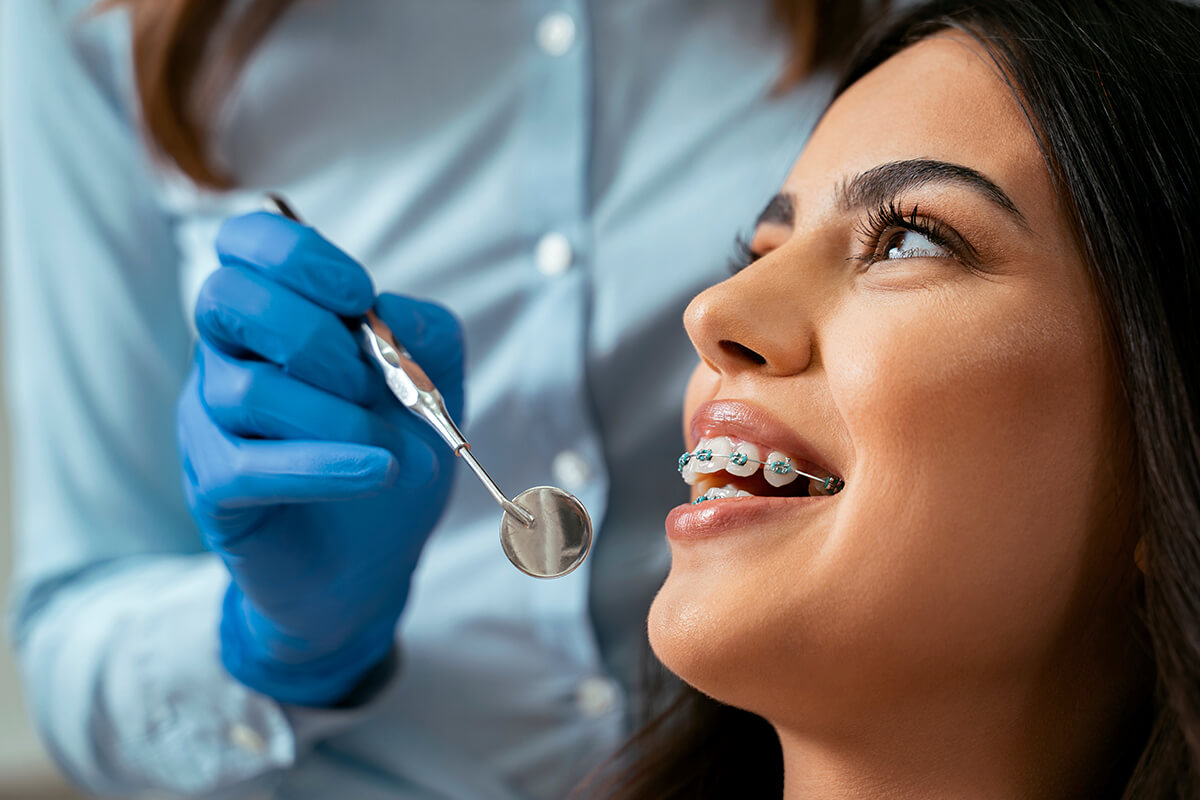Orthodontics is a specialized branch of dentistry that focuses on diagnosing, preventing, and treating irregularities in the teeth and jaws. Properly aligned teeth and jaws are not just about aesthetics; they play a crucial role in oral health, allowing for proper chewing, speaking, and breathing.
Orthodontic problems are common, affecting individuals of all ages. Early detection and treatment of these problems are essential for preventing more serious issues and ensuring optimal oral health throughout life.
Malocclusion: When Teeth Don’t Align
Malocclusion refers to any misalignment of the teeth or jaws. There are various types of malocclusion, each with its own set of characteristics and potential complications.
- Overbite: An overbite develops when the upper front teeth are significantly overlapping the lower front teeth. This can lead to excessive wear on the teeth, jaw pain, and difficulty chewing.
- Underbite: In an underbite, the lower teeth protrude in front of the upper teeth. This can affect facial appearance, speech, and chewing function.
- Crossbite: A crossbite happens when one or more upper teeth bite inside the lower teeth. This can cause uneven wear on the teeth, gum disease, and bone loss.
- Open bite: An open bite is characterized by a gap between the upper and lower front teeth when the mouth is closed. This can make it difficult to bite or chew properly and may affect speech.
- Spacing: Spacing refers to gaps or spaces between the teeth. This can be caused by missing teeth, small teeth, or a discrepancy between the size of the teeth and the jaw.
- Crowding: Crowding occurs when there is insufficient space in the jaw to accommodate all the teeth, causing them to overlap or become crooked. This can make it difficult to clean the teeth properly, increasing the risk of tooth decay and gum disease.
Visual and Functional Signs and Symptoms of Orthodontic Problems

Orthodontic problems often manifest in various visual and functional signs and symptoms that can affect oral health and overall well-being. Recognizing these signs is crucial for seeking timely orthodontic intervention.
- Crooked or crowded teeth: This is often one of the most noticeable signs of an orthodontic problem. Crowded teeth can be difficult to clean, increasing the risk of cavities and gum disease.
- Misaligned jaws: Misalignment of the jaws can cause the face to appear asymmetrical and can lead to problems with chewing, speaking, and breathing.
- Difficulty biting or chewing: If you find it difficult to bite or chew certain foods, it could be a sign of malocclusion.
- Speech problems: Misaligned teeth or jaws can affect the placement of the tongue, leading to difficulties with pronunciation.
- Mouth breathing: Mouth breathing can be a sign of an orthodontic problem, particularly if it is accompanied by snoring or sleep apnea.
- Jaw pain or clicking: Jaw pain or clicking sounds when opening or closing the mouth can indicate temporomandibular joint disorder (TMD), which is often associated with malocclusion.
- Abnormal wear of teeth: Uneven wear on the teeth can be a sign of malocclusion, as the teeth may not be meeting properly when biting or chewing.
- Receding gums: Receding gums can be caused by misaligned teeth that put excessive pressure on the gums and bone.
- Protruding teeth: Protruding teeth can be more susceptible to injury and can affect facial aesthetics.
- Difficulty cleaning teeth: Misaligned teeth can make it difficult to effectively brush and floss, leading to poor oral hygiene.
The Impact of Orthodontic Problems
Orthodontic problems can have a significant impact on various aspects of an individual’s life, extending beyond just aesthetics.
- Oral health: Misaligned teeth can increase the risk of tooth decay, gum disease, and tooth wear. They can also make it more difficult to maintain good oral hygiene.
- Self-esteem: Orthodontic problems can affect a person’s self-consciousness about their appearance, leading to lower self-esteem and social anxiety.
- Speech: Malocclusion can affect speech patterns and pronunciation, potentially impacting communication and social interactions.
- Chewing and digestion: Difficulty chewing due to misaligned teeth can lead to digestive problems and inadequate nutrient absorption.
- Sleep: Orthodontic problems can contribute to sleep disorders such as sleep apnea, snoring, and bruxism (teeth grinding).
- Jaw pain and headaches: Malocclusion can strain the jaw muscles and joints, leading to chronic pain and headaches.
- Overall well-being: Addressing orthodontic problems can improve overall quality of life by enhancing oral function, aesthetics, and self-confidence.
When to See an Orthodontist
While regular dental check-ups are essential, there are specific situations where a consultation with an orthodontist is recommended.
- Early childhood: The Canadian Association of Orthodontists recommends that children have their first orthodontic assessment by the age of seven. Early detection of potential problems allows for timely intervention and may prevent more complex issues later on.
- Noticeable misalignment: If you notice any signs of crooked teeth, jaw misalignment, or difficulty biting or chewing, it’s important to see an orthodontist for evaluation.
- Speech difficulties: If your child is experiencing speech problems, an orthodontic assessment can determine if malocclusion is a contributing factor.
- Jaw pain or clicking: If you experience jaw pain, clicking sounds, or difficulty opening or closing your mouth, it’s advisable to consult with an orthodontist.
- Referral from your dentist: Your dentist may refer you to an orthodontist if they detect any orthodontic problems during your regular check-up.
Treatment Options

Orthodontic treatment involves various appliances and techniques to correct misalignment and achieve optimal oral health and aesthetics.
- Braces: Braces are the most common orthodontic treatment, using brackets, wires, and bands to gradually move teeth into their desired positions. Traditional metal braces, ceramic braces, and lingual braces (placed behind the teeth) are available options.
- Clear aligners: Clear aligners are a series of removable, transparent trays that are custom-made to fit over the teeth and gradually shift them into alignment. They offer a more discreet alternative to traditional braces.
- Retainers: Retainers are custom-made appliances worn after braces or clear aligners to maintain the corrected tooth positions and prevent relapse.
- Other appliances: Depending on the specific orthodontic problem, other appliances such as palatal expanders, headgear, or functional appliances may be used to guide jaw growth and correct bite issues.
Orthodontic problems are common but treatable conditions that can significantly impact oral health, function, and overall well-being. Recognizing the signs and seeking timely treatment from an orthodontist are crucial for achieving a healthy and confident smile. Early intervention, particularly in childhood, can often prevent more complex issues from developing and lead to more efficient treatment outcomes.
If you have concerns about your oral health or notice any signs of orthodontic problems, don’t hesitate to contact Kingsway Family Dentistry at (905) 563-4001 to schedule a consultation. Our team offers comprehensive dental care, including orthodontic solutions, to help you achieve optimal oral health and a beautiful smile.
